Food, Culture, and Independence, Picantería La Cusqueñita Restaurant

An important garden restaurant opened this year in Cuzco amidst all the road work on Tullumayo Street. Reminiscent of the traditional quintas where families would go to spend an afternoon while feasting, it claims to be a picantería, a traditional Cuzco Restaurant serving chicha and authentic local food in a rustic ambiance, though not that of the garden. Called La Cusqueñita, the restaurant represents and displays Cuzco’s culture, in dance, style, and food, for the people of Cuzco and visitors to consume.
In the big dining hall, under a ceiling of totora reed mats, people are served enormous portions of classical dishes one might expect from a picantería along with enormous glasses of chicha to wash it down. While one eats, dancers take to the small stage and perform named pieces that shine in condensed fashion like the gems in a monarchs crown that symbolize the kingdom.
On one side is the large, modern kitchen, although it does claim a fogón, a classic adobe stove, and on the other the stage. From each of the remaining sides light pours into the place through walls of clear glass that lets the gardens in. Though in the city, with a high rise growing behind it, nevertheless its patio walls have a black metal framing that holds pots of flowering plants to bring color and life in horizontal and vertical dimensions.
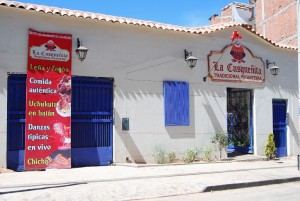
One enters la Cusqueñita to a hall that turns to the left and takes you to where on a burner woman stirs up picarones in bubbling fat. These are the sweet, donut like frybread that is a traditional Peruvian dessert and, as such, lets people know they are entering a place where Peruvian-ness in its special Cuzco form reigns. One turns to the right in front of her and walk by the open kitchen where, despite the aluminum rack behind and the gleaming preparation space, women in classic Cuzco style Chola dress, a tall white hat and broad pleated skirt, work around earthenware pots and a traditional fogón. The more modern stove is probably hidden behind the racks and the image of traditionalism performed for those entering La Cusqueñita.
This performed paradigm of Cuzco’s tradition on a modern stage is the work of a very important local person, Dr. Carlos Moscoso Perea. He is a once and probably future candidate for the position of mayor of the city of Cuzco as well as the leader of an a political movement with its own Facebook Page, Fuerza Cusco (Strength Cuzco).

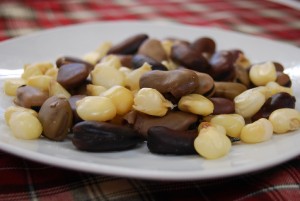
Dr. Moscoso with his open angular face and eye glasses looks like a combination of politician and academic. Indeed, besides working in politics he has a list of professorial experience.
After spending his childhood in lowland Quillabamba, part of the fiercely militant province of La Convención, at a time when memories of movements for workers and farmers were very fresh, Moscoso made his way to the capital, Cuzco, to study political science. From here, he went to the powerful Spanish university in Madrid called La Complutense where he obtained a doctorate with a subsequently published dissertation of political populism in Latin America.
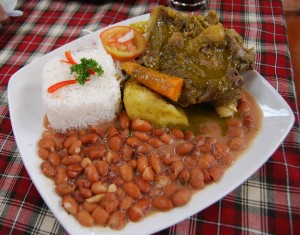
He was a member of the center conservative nationalist Acción Popular (Popular Action) party, a member of congress, an opponent of the long-lasting Fujimori government, who now defines himself contradictorily as a “man of the center and the left.” Moscoso is “sensitive to the demands of (ordinary) people” for social inclusion and the reduction of inequality.
Moscoso is opposed to the dominance of Lima over Peruvian affairs and holds that Cuzco should free itself from Lima’s hold and become autonomous.
Besides writing political manifestos and leading political movements, Dr. Moscoso has now opened a restaurant that is a banner of Cuzco’s culture and a challenge to the effort to make Peruvian food synonymous with the creole food of Lima and the work of Lima’s chefs. It is a populist call, without all the verbiage of politics, to celebrate and hold high Cuzco’s culture as something that should stand proud and be recognized in its own right.
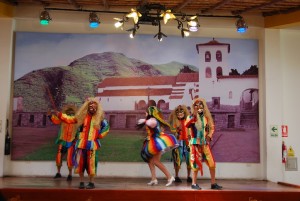
As a result, it is not surprising that La Cusqueñita would make a reduction of two of the culinary symbols of Cuzco, the picantería and the quinta, to make a statement on Tullumayo Street. This is a culinary manifesto and La Cusqueñita joins it with the staging of regional dances that have come to symbolize Cuzco as part of a strong resurgence of local culture in the the city. Together they stand to shout “we are Cuzco and we are here”.
The Friday lunch time we went the place was packed with Cusqueños, which is quite an accomplishment given how large a space it occupies.
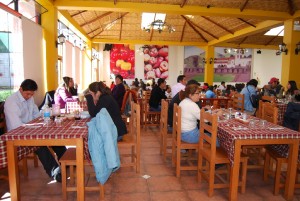
Our meal started with a complimentary plate of mote y pusphu, an appetizer of boiled white corn and boiled toasted broad beans, a Cuzco classic. We had a pastel de papa (potato and cheese pie), an asado de cordero (lamb roast), a bisteck montado (a steak and fried egg), and a seco (cilantro stewed beef). While the others were traditional Cuzco fare, the latter symbolizes the coast and is part of a small offering of creole dishes as if to simply male the point that creole is not the beginning and end of Peruvian cuisine.
After the delight of the mote and pusphu we were disappointed when our pitcher of chicha morada came. It was frankly watered down and lacked the spicy, fruity complexity of the drink most places.
When the food arrived, we were surprised at how abundant the servings were. These were mountains of food that pleased the eye as well as the scent. However each of us felt intimidated, as if it were too much, more than we could possibly finish. Nevertheless, they did fit the Andean code of hospitality that requires super-abundance in servings.
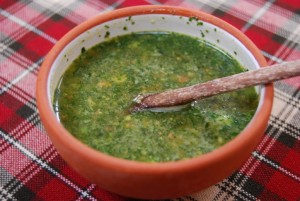
The meat was tender but the seco was undercooked. In all cases the dishes lacked the bite and flavor of a good picantería such as those that still exist in Cuzco, although the picantería as popular restaurant seems in retreat.
When we were discussing the differences between La Cusqueñita and a picantería, Walter said that La Cusqueñita was “rescatando,” rescuing, the picantería. This idea of the rescue is an important one, whereby culture is seen as on the threat of extinction due to modernization and then is saved by being removed from context, crystallized, and made something to be performed.
Yes. And this kind of saving of culture, along with its reduction from something you live every day to something that is performed on only a few occasions or something that occupied a museum instead of the streets is very common around the world. Indeed it is part of modernization.
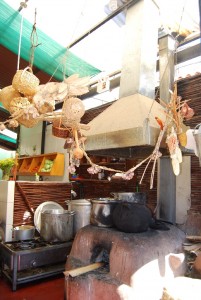
Dr. Moscoso in his restaurant seems to be doing this kind of rescue of picantería dishes and fusing them with the look of the quinta, the garden restaurant. His rescue, however, is meant to challenge the growth of a different rescue, that of creole food and culture that many people simply see as the code of the Peruvian. La Cusqueñita is meant to challenge that in its mere existence as a formal, performable code that synthesizes so much about Cuzco into a simple meal.
Fortunately, quintas and picanterías are still found around Cuzco. For many tourists they might be a bit of a challenge, but if you wish to know Cuzco culture as it is lived simply without quotes, then you should try one of them. But, if you wish to see the quoted culture of Cuzco, sanitized and performed, then La Cusqueñita is for you.
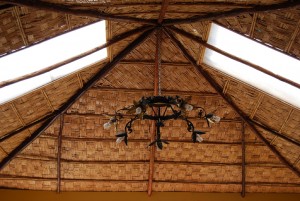





Hey!
I’m trying to find this restaurant, could you tell me the address or directions?
Thanks, looks a really nice place